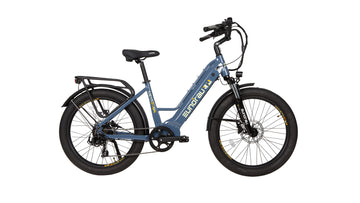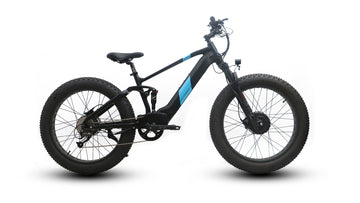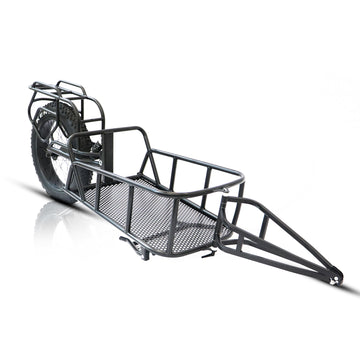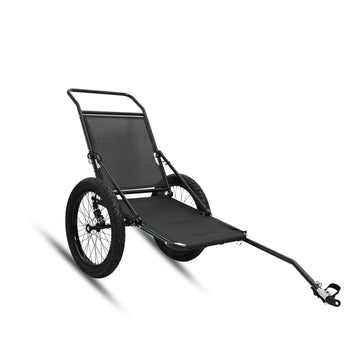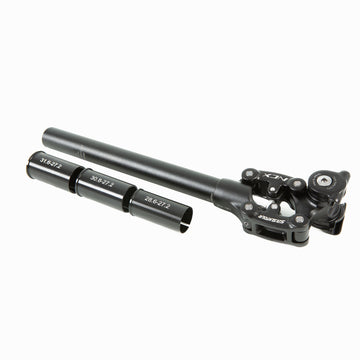
There’s something magical about cruising along a coastline — the sound of waves, the wide-open horizon, and the salty breeze brushing past your face. It’s no wonder many riders wonder if their electric bikes can handle the beach.
At EUNORAU, we design e-bikes that expand what’s possible. Our riders aren’t limited to city streets — they explore mountains, forests, and yes, even beaches. But riding on sand isn’t as simple as it sounds. It requires the right bike, technique, and care.
So, can you ride an e-bike on the beach? Absolutely — with the right setup and preparation. Let’s break down how to do it safely, effectively, and enjoyably.
Can You Really Ride an Electric Bike on the Beach?
The short answer: Yes, you can ride an e-bike on the beach — but not every e-bike is built for it. Sand behaves differently from pavement or dirt. It’s soft, unstable, and can be corrosive due to salt and moisture.
That means the success of your beach ride depends on four key factors:
1. The bike’s design and tires
2. The type of sand
3. Local beach regulations
4. How you maintain the bike afterward
A. The Bike Design
Beach riding requires power, balance, and traction. That’s why fat tire e-bikes — like the ones in EUNORAU’s lineup — are ideal. With extra-wide tires (usually 4" or more), these bikes “float” on soft sand instead of sinking into it.
Models such as the EUNORAU FAT-HS, FLASH AWD, and DEFENDER-S are equipped with powerful motors and fat tires that make beach terrain surprisingly smooth. The dual-motor system on the FLASH AWD, for instance, gives riders front and rear traction control — perfect for soft, uneven sand.
B. The Type of Sand
Not all beaches are the same.
Firm, wet sand near the waterline is the best surface for e-bikes — it provides grip and stability.
Dry, fluffy sand higher up the beach is difficult to ride through, even with fat tires.
Pebbly or rocky beaches can challenge balance and tire traction.
If you’re riding during low tide, you’ll usually find the most stable sand — ideal for smooth, controlled rides.
C. Beach Rules and Local Regulations
Some beaches welcome cyclists, while others restrict motorized vehicles, including e-bikes. Always check signage or local regulations before riding. Be courteous — share space with walkers, avoid wildlife areas, and keep speeds moderate.
D. Maintenance and Salt Exposure
The coastal environment is harsh on metal. Salt and sand can corrode components and shorten the lifespan of your e-bike if left untreated. Post-ride cleaning (which we’ll explain later) is crucial
What Kind of E-Bike Works Best on the Beach?
A. Fat Tire E-Bikes: The Ultimate Choice
At EUNORAU, we consider fat tire e-bikes the best all-around solution for sand riding. The combination of tire width, torque, and traction makes them both stable and comfortable.
Here are a few models that shine on the beach:
• EUNORAU FLASH AWD
A dual-motor powerhouse (front + rear) that offers incredible control on loose terrain. You can toggle between front, rear, or all-wheel drive to adapt to changing sand density.
• EUNORAU FAT-HS
Built for off-road adventure, the FAT-HS combines a Bafang 1000 W mid-drive motor with suspension and large 26"x4.0" tires — giving it the muscle and balance for long stretches of beach cruising.
• EUNORAU DEFENDER-S
The DEFENDER-S offers twin 750 W motors, full suspension, and hydraulic brakes — perfect for riders who want both performance and comfort on challenging surfaces like wet sand or gravel paths.
Each of these models uses corrosion-resistant components and durable frames that stand up to coastal conditions better than standard commuter e-bikes.
B. Step-Thru Options for Leisure Riders
If your goal is more about casual seaside exploration than deep-sand riding, step-thru models such as the EUNORAU META 275 or FLASH LITE ST can handle compact sand or boardwalk paths with ease. They’re lighter, easier to mount, and great for short coastal rides.
C. Tire Pressure Matters
No matter which model you choose, tire pressure makes a huge difference.
Lowering tire pressure (typically to 15–20 PSI) helps your tires spread out and grip the sand.
Just don’t go too low — you still need rim protection and stability.
EUNORAU’s fat tire e-bikes are specifically designed to run effectively at these lower pressures.
Essential Tips for Riding on the Beach
Beach riding is exhilarating, but a few smart habits can make the difference between a smooth adventure and a frustrating slog.
A. Preparation Before You Ride
- Charge fully – Sand demands more torque and power, which drains your battery faster.
- Lower tire pressure – Improve traction without sacrificing stability.
- Check all bolts – Vibration from uneven terrain can loosen hardware.
- Plan your route – Know where bike access is allowed and identify the best terrain (wet, compact sand).
- Bring cleaning essentials – A towel, brush, and spray bottle of fresh water help you quickly remove salt and grit afterward.
B. While Riding
- Keep momentum steady – Starting and stopping too often in soft sand makes balance harder.
- Use pedal assist wisely – Moderate assist levels prevent wheel spin and conserve battery.
- Steer gently – Over-steering on sand can cause tires to dig in or slide.
- Ride closer to low tide – The surface is firmer, and you’ll avoid splashing saltwater onto electronics.
- Mind pedestrians – Many people walk or sunbathe along the same paths. Ride respectfully.

C. After the Ride
- Rinse immediately – Use fresh water to wash off all sand and salt, especially around the drivetrain, brake calipers, and battery ports.
- Dry thoroughly – Use a towel or air-dry the bike to prevent rust and corrosion.
- Lubricate the chain – Apply fresh chain oil after each beach ride.
- Inspect electrical contacts – Make sure all plugs and ports are clean and dry before recharging.
Following these steps will keep your e-bike performing like new — even with regular beach use.
Common Challenges and How to Overcome Them
A. Deep Sand
The most obvious obstacle. If the sand is too soft, even fat tires may sink. Solution: stick closer to the waterline or use all-wheel drive (like the FAT-AWD) for more grip.
B. Saltwater Spray
Salt is the enemy of electronics and metal. Avoid riding through saltwater puddles or waves. Always rinse your bike right after your ride.
C. Battery Drain
Sand adds rolling resistance, which makes your motor work harder. Expect your range to be 15–25% shorter than on pavement. Plan accordingly and carry a charger or backup battery if you’ll be far from home.
D. Overheating Motors
Continuous riding in soft sand at full power can heat up the motor. Take breaks to cool off if you feel resistance or hear abnormal noise.
E. Environmental Awareness
Beaches are ecosystems — stay clear of dunes, nesting zones, and tide pools. Riding responsibly ensures the experience remains available to everyone.
Why EUNORAU Fat Tire E-Bikes Excel on the Beach
At EUNORAU, our philosophy has always been about expanding boundaries — designing e-bikes that aren’t limited to smooth roads. Our fat tire lineup was engineered precisely for versatile terrain like beaches, snow, and trails.
Here’s what makes them stand out:
- Powerful Motors: Up to 1000 W mid-drive or twin 750 W hub motors provide enough torque to conquer soft sand.
-
Stable Frames: Durable aluminum frames keep balance and control on shifting surfaces.
- Fat Tires (26” × 4.0”): Provide flotation, traction, and shock absorption.
- Water-Resistant Electronics: Built to handle occasional splashes and humid environments.
- Hydraulic Brakes: Reliable stopping power even when sand and moisture are present.
Riders who own models like the FAT-AWD often report using them regularly on beach trails without issue — as long as maintenance is consistent.
Making the Most of the Experience
Beach riding isn’t just about performance; it’s about joy and connection with nature. Here are a few ideas to get the most from your trip:
- Go early in the morning – The sand is cooler and more compact, and the beach is quieter.
- Bring a camera or GoPro – Capture the sunrise or sunset views.
- Pair your ride with leisure – Pack a small picnic, bring a folding chair, or stop for a swim.
- Ride with friends or family – E-bikes make it easy for everyone, regardless of fitness level.
With EUNORAU’s fat tire e-bikes, these experiences are accessible — turning a normal ride into something extraordinary.
Ride Responsibly, Ride Freely
So, can you ride an electric bike on the beach? Yes — and it’s one of the most freeing ways to experience the coast.
With the right e-bike (like EUNORAU’s fat tire range), proper preparation, and a bit of post-ride care, you can explore miles of shoreline that most riders never reach.
Whether you’re chasing sunsets, exploring seaside trails, or simply enjoying the fresh ocean air, a well-equipped e-bike transforms the beach into your playground.
At EUNORAU, our goal is to make that experience reliable, safe, and unforgettable — no matter where the road, trail, or coastline takes you.


